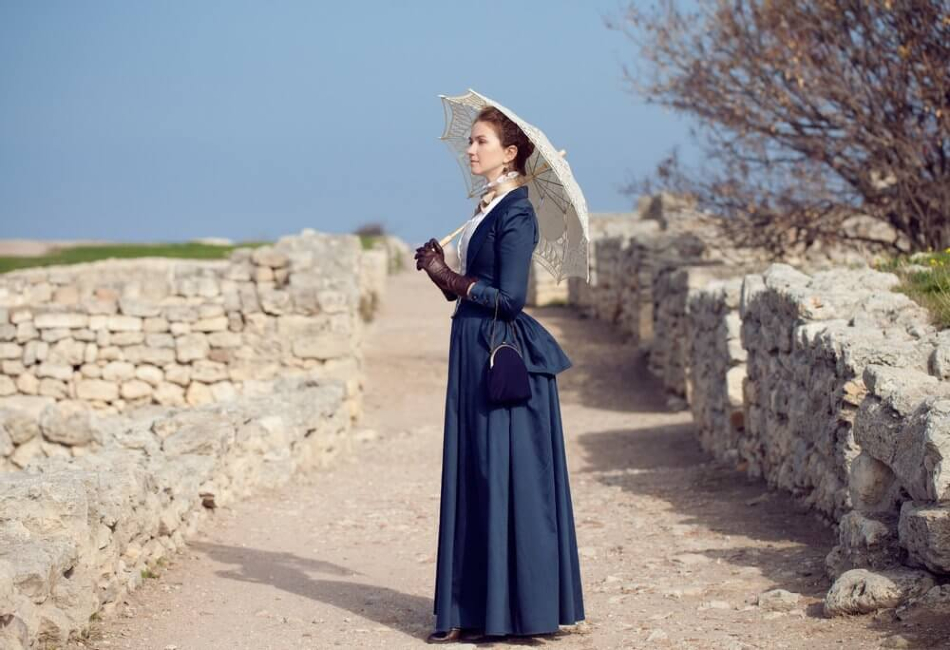Any style begins with a set of distinctive and unforgettable pictures. But the Victorian style, a spectacularly creative and aesthetic phenomenon characterized by eclecticism and stylistic omnivorousness, holds a remarkable position in several fashion trends. This style is intriguing and still relevant today because of its recognizable characteristics and magnificent manifestation.
The Victorian era is in full swing, from victorian dresses with numerous layers of tulle and crinolines to high collars and elegant bows in 19th-century fashion. Velvet and lace gowns, royal brocade gowns, corsets accentuating the waist, closed models with high collars, romantic appearances with broad shoulders, and various layers of airy ruffles have all been prominent fashion features of the dresses.
Style features
Victorian fashion mixes femininity with English rigor and clarity. It is hardly unexpected considering Queen Victoria, its progenitor, possessed all these characteristics. The population of England saw a decline throughout her reign, which led to a greater yearning for luxury and beauty. This goal was expressed in the style which was eventually known as Victorian.
The following are some characteristics of the Victorian style dresses:
- Opulent design. Inspired by the vivid and lavish attire of the Queen Victoria era, the designers made clothes that were heavily embellished with ribbons, bows, ruffles, folds, enormous drapes, lace, stones, and other dynamic features.
- Corsets. This item of clothing served as a crucial component of Victorian apparel, effectively capturing the femininity of the period.
- Hourglass shape. It is most frequently used in conjunction with a corset.
- Enormous decorations. The Victorian outfit’s distinguishing feature now appears relatively harmonious. Large jewelry is a must to complete a contemporary ensemble. Costume jewelry is another option besides jewelry. Any complex components have no place in the Victorian scene.
The emergence of the Victorian era signaled the beginning of a prosperous period. These days, the outfit’s distinctive qualities create the appearance of luxury, concise, and alluring.
Typical Victorian era attire
Women put on a closed, long-sleeved housedress in the morning for conversation inside the closest circle. When visitors arrived, it was expected to be dressed in a reception dress, which wasn’t as plain and implied a more engaging performance but was modest and gloomy. Daytime visits required a different attire, and before leaving the house, it was necessary to don gloves, a hat, and appropriate apparel for the weather.
Clothing for walking and a different version of it , which was made for riding, existed. By the end of the Victorian era, women were already leading active lives. They played tennis and rode bicycles. Clothes for such activity were quite loose, and the crinolines of the 1950s and 1960s had long since disappeared in favor of bustles, which drew attention to the back of dresses.
One would wear their dining attire before sitting down to supper at home or a celebration. It was more elaborate and expensive, but it was still closed clothing, unlike an evening gown, with a plunging neckline and short sleeves; it was worn to a dinner party, to participate in formal events, or to go to the opera or the theater. A cape, gloves, and jewelry are all required accents for an evening gown. The ball gown was the most somber and opulent attire; naturally, it would be good to wear a different one each time. Choose a dress that suits your style and taste perfectly to feel confident and beautiful.

